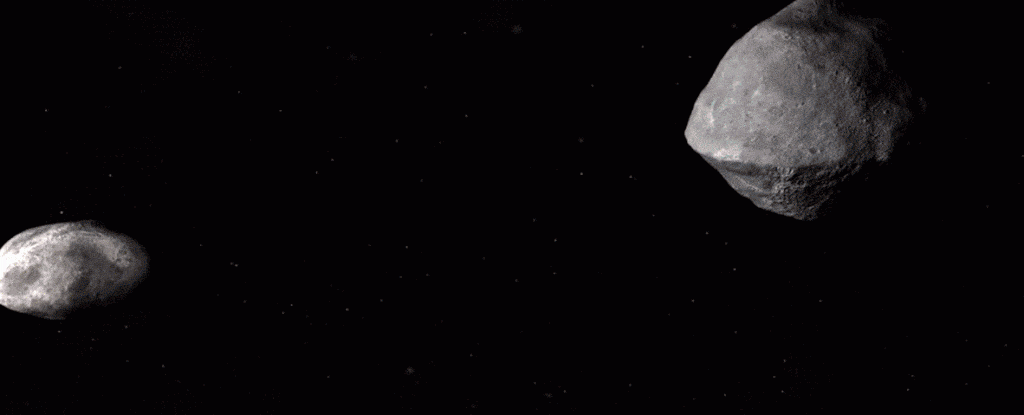
The dust that envelops infant suns scatters visible light, hiding what lies within from our eyes, but it lets infrared radiation largely pass through. The same holds true for newly forming stars. Peering into the infrared is the only way to observe these young galaxies from Earth’s vicinity. These distant objects emit ultraviolet and visible light, but the expansion of the universe shifts this radiation to longer infrared wavelengths. Observing in the infrared allows astronomers to see galaxies that existed less than a billion years after the Big Bang. Perhaps surprisingly, in its intended infrared domain, JWST generally won’t resolve finer details than Hubble achieves in optical light: Although resolution increases with mirror size, it also diminishes with wavelength. Hubble’s optics are optimized to record radiation from 0.09 micrometer (in the ultraviolet) to 2.5 micrometers (in the near-infrared), with the majority of its sensitivity centered on visible light. The space telescope can view wavelengths from 0.6 to 28.5 micrometers, from the red end of the visible spectrum to the mid-infrared.

Hustak (STScI))īut JWST’s sensitivity to infrared light is the real game-changer. (Credit: Astronomy: Roen Kelly, after NASA/ESA/L.

This stretches out the wavelength of light as it travels through our expanding universe. As space expands, stars and galaxies maintain their size, but the distance between them grows. Cosmological redshift is the stretching of light to longer (redder) wavelengths by the expansion of the universe itself. This colossus gathers more than six times as much light as the Hubble Space Telescope’s 2.4-meter mirror, so it can record light from objects six times faster than its predecessor. First and foremost is its size: JWST features a 6.5-meter mirror composed of 18 gold-plated hexagonal segments. The newest space telescope comes with significant advantages over any previous mission. After more than a year in space, JWST is starting to turn those dreams into reality. Those dreams belonged to astronomers hoping to peer farther into space than ever before, to a time when the first galaxies formed to penetrate dust clouds to witness the birth of stars and to probe the atmospheres of exoplanets to see if they might support life. When an Ariane 5 rocket lifted off from French Guiana on Christmas Day 2021, it carried a cargo of dreams: the James Webb Space Telescope (JWST).

In this JWST view, hotter gas glows yellow-white and cooler gas appears more rust-colored. Dimorphos is smaller than both, measuring just 160 meters (525 feet) across.The massive blue-white stars at the center of the Tarantula Nebula (NGC 2070) in the Large Magellanic Cloud have carved a huge cavity into their gaseous surroundings. Ground-based observatories around the world will be observing the asteroid system as a way to confirm if DART successfully changed the asteroid’s motion.ĭidymos measures about 780 meters (2,560 feet) across, placing its size between Ryugu and Bennu. Together, they will collect images and help guide LICIACube on its journey. On the CubeSat are two cameras called LUKE (LICIACube Unit Key Explorer) and LEIA (LICIACube Explorer Imaging for Asteroid). This briefcase-size CubeSat hitched a ride with DART to space and detached from the spacecraft on September 11. What starts as 1 pixel will eventually become an incredibly detailed look at Dimorphos before DART slams into it.Īlso on the journey is the Italian Space Agency’s Light Italian CubeSat for Imaging of Asteroids, or LICIACube. Those images will be shared at a rate of one per second, providing a video-like experience for viewers. The DART spacecraft is carrying an imager called DRACO, short for Didymos Reconnaissance and Asteroid Camera for Optical navigation, that will share a live stream of images as it nears the double-asteroid system. What will be visible when the DART spacecraft crashes into a tiny asteroidĪ live broadcast will kick off on NASA’s website beginning at 6 p.m. With naked eye? no on-line streaming? yes Image from LICIACube spacecraft's LUKE camera shortly after impact: Motion clips from or compiled from ATLAS (Asteroid Terrestrial-impact Last Alert System): A NASA and University of Hawaii project, and 1 meter telescope at South African Astronomical Observatory:


 0 kommentar(er)
0 kommentar(er)
